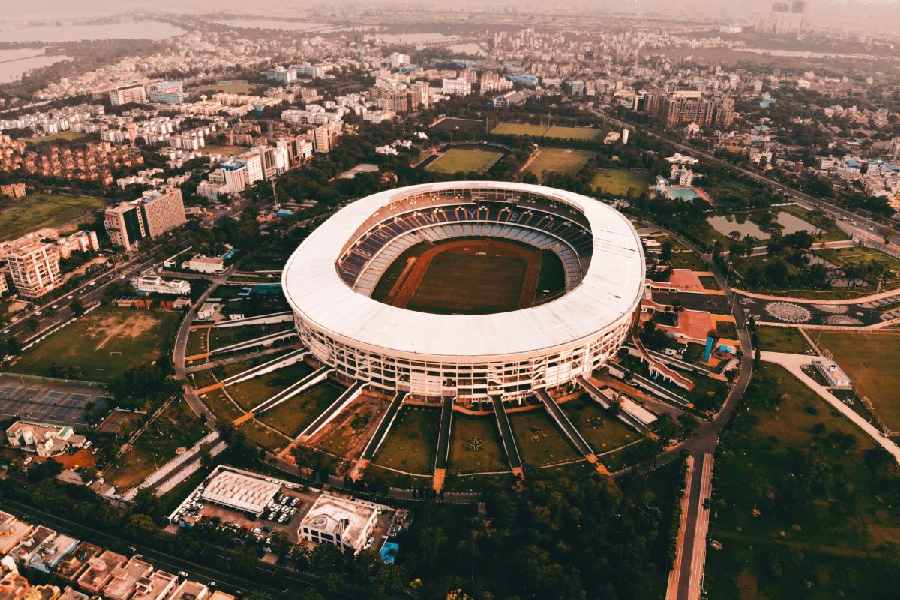Recently, People’s Green Society, a non-profit organisation, and the Bengali magazine Deshkaal published their decades-long research on the origin and development of Salt Lake in the form of a book titled East Suburban and Salt Lake: Nogor Kolkatar Pubmukhi Somprosaroner Itibritta or The Story of the Eastward Expansion
of Calcutta.
Researchers Moumita Saha and Shyamal Ghosh went through reams of documents from government departments, archives and personal collections and spoke to hundreds of senior residents of the area to gather oral history. The 576-page book includes dozens of rare photographs, sketches and maps — some of them over a
century old.
They also met the fisherfolk and farmers who had to forsake the marshes — their source of livelihood and shelter. Says Saha, “Thousands of them were evicted overnight to accommodate upper-class residents of the new township. Also, no one bothered about the ecological damages the reclamation would cause.” Ghosh stresses how “rich biodiversity and the remains of an ancient civilisation — Gangaridai — was destroyed” when the marshland was filled up.
Here are five snapshots from the book on the story of lost wetlands.
A Stuttering Start
Reclamation of saltwater lakes for Calcutta’s eastward expansion began on April 16, 1962. That was when the then chief minister of West Bengal Dr Bidhan Chandra Roy switched on the delivery pipeline from River Hooghly supplying silt for landfill.
But there had been seven earlier attempts at reclamation. Colonel William Tolly, an officer of the Bengal Artillery, had been the first to propose the digging of a canal to connect the Hooghly and the saltwater lakes in 1775. His other proposal, to create a canal at his own expense, was readily accepted and Tolly Nullah is named after him. But the good colonel’s idea of building a 12-mile-long connecting channel was considered impractical and rejected.
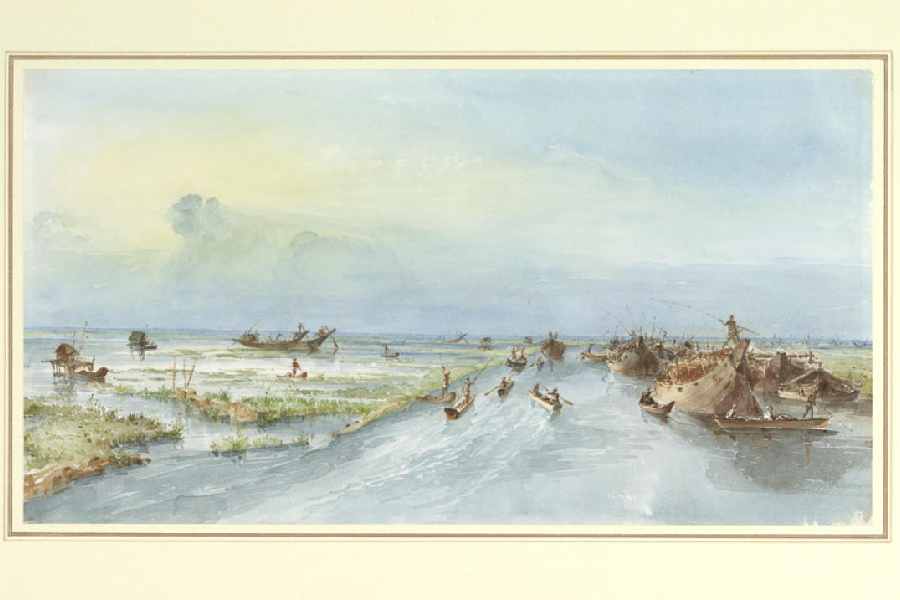
The Salt Water Lake east of Calcutta crowded with boats with the city in the distance by Thomas Prinsep
Among the failed attempts featured one based on the report of William Bentinck and Thomas Prinsep in 1830, and another from 1865 that proposed the registration and formation of the Salt Water Lakes Reclamation and Irrigation Company Limited. Saha says, “The colonial government wanted the swamps to be reclaimed in order to make the area more productive and generate revenue. They never thought of building a township on the reclaimed land.”
Fishermen’s Trove
Saltwater lakes and their fish ponds produced a bountiful harvest of bhetki, prawn, shrimp, crab and so on. Several co-operative units were formed by a large community of fisherfolk. Largest among them was the Bidyadhari Spill Matsyajibi Samabay Samiti (BSMSS), which had an authorised capital of Rs 1 lakh in 1942. This was India’s largest fishermen’s co-operative and Asia’s second largest.
Most of the members belonged to the Rajbanshi community — adept at various techniques of fishing and crafting boats. The ruins of the office building of the BSMSS can still be found in the Duttabad area; the water body in Central Park is all that remains of the co-operative’s many bheris.
Fish and Farm
Today, the East Kolkata Wetlands boasts the largest sewage-fed farmlands and fisheries in the world. Hundreds of tonnes of fish and vegetables are grown in the wetlands to meet Calcutta’s growing demand for food. More importantly, the farms — termed the city’s kidneys — clean up millions of gallons of wastewater dumped by the metropolis. The sewage fisheries and farming started in the salt lakes when farmers realised that wastewater had robbed the saline element of the waters. Bidhu Bhusan Sarkar, a zamindar of the Beliaghata area, encouraged them to carry on experiments for farming freshwater fish in the bheries, mostly owned by him. Bhabanath Sen, an aristocrat who had taken out a lease on the dumping grounds beside the salt lakes, introduced vegetable farming in the late 19th century.
Salt March
Mahishbathan, a locality on the fringes of Sector V in Salt Lake, had turned into one of the focal points of Gandhi’s Salt Satyagraha. The most famous Salt March was led by the Mahatma from his ashram at Sabarmati to Dandi on the Arabian Sea coast. Volunteers produced salt in defiance of British laws. In undivided Bengal, the coastal hotspots were Chittagong, Noakhali, Barisal, Khulna and Contai. Far away from any sea coast, “satyagrahis” led by Gandhians Lakshmikanta Pramanik and Satish Chandra Dasgupta took up salt production defying the colonial police. Dasgupta led the march from Gandhi’s ashram at Sodepur near Calcutta to break the law. The palatial mansion of the Pramaniks, the zamindar of Mahishbathan, and the spot of salt production exist to date.
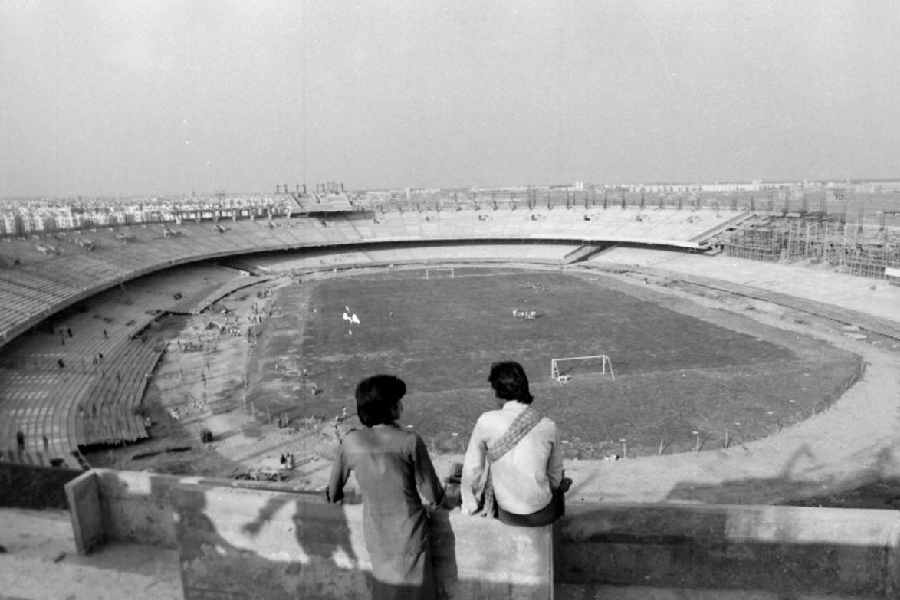
Salt Lake Stadium.
Time and Ride
More than a hundred years before the East-West Metro railway started operations in Calcutta, a similar underground railway from Howrah to the fringes of the saltwater lakes was planned. The proposer was civil engineer Harley Hugh Dalrymple-Hay of London’s “tube” railway. Dalrymple-Hay was commissioned to draw up a plan of the East West Tube Rail purported to run beneath the Hooghly right up to Bagmari.
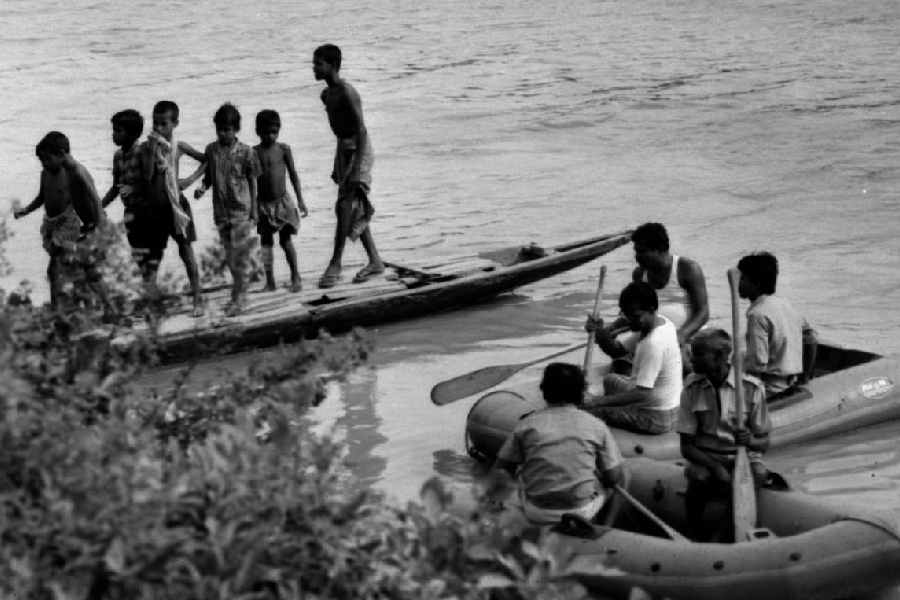
Trial runs of speed boats to be used for the civic election of Salt Lake Notified Area Authority at Mahish Bathan in Salt Lake area.
The discussion of the plan finds mention in the proceedings of meetings at the Imperial Legislative Council in Simla in 1919. Personal accounts of Dalrymple-Hay corroborate the fact that he had consulted the London-based engineering firm Rendel, Palmer and Tritton and also dispatched a seasoned civil engineer called E.A. Ogilvie to survey the area chosen for the project. Subsequently, he submitted the design, but the “prohibitive” cost of the project forced the colonial government to scrap it. Sir Harley had even fixed the price of a ticket for each trip on the tube rail — a princely 3 annas!
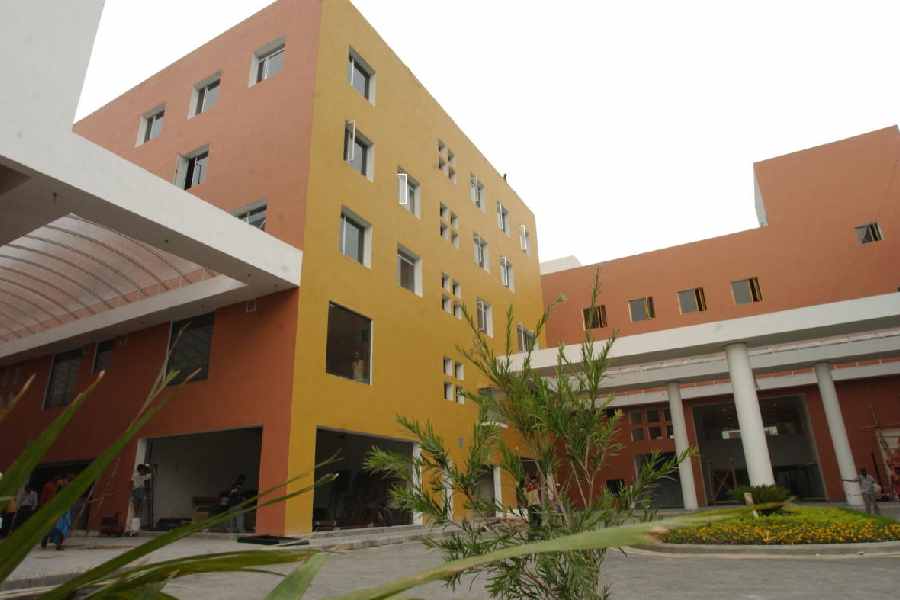
City Centre complex at Salt Lake; Harsh Neotia, Bengal Ambuja Metro Development Limited.
Dr Bidhan Chandra Roy envisaged Salt Lake to accommodate the growing population of Calcutta, especially after the influx of hundreds of thousands of refugees post-Partition. It was meant for people from middle and low-income groups. Today, however, the upscale satellite town is far removed from that dream. The expanding network of the East-West Metro weaving its way through colossal mansions, shopping malls, multiplexes and a giant sports stadium are in sharp contrast to the interconnected bheris tended by the fishermen of yesterday.

